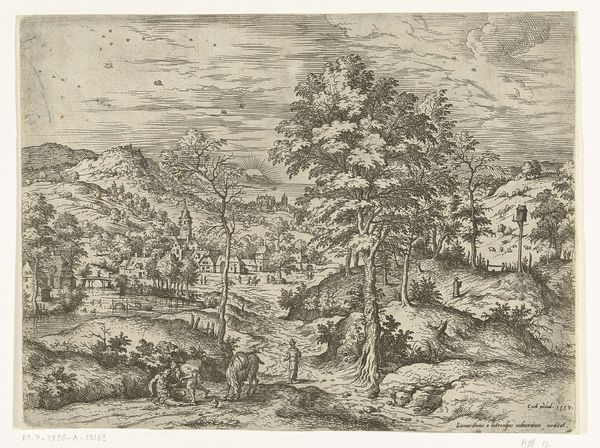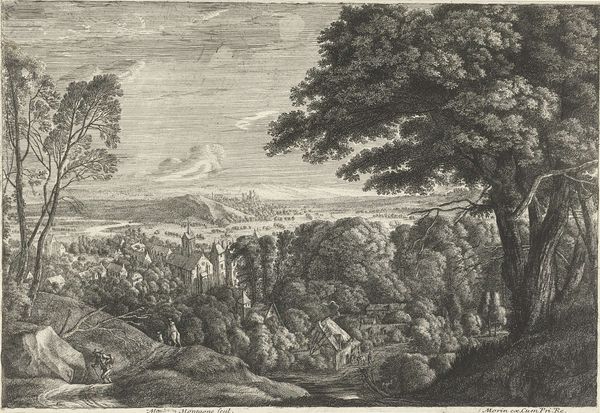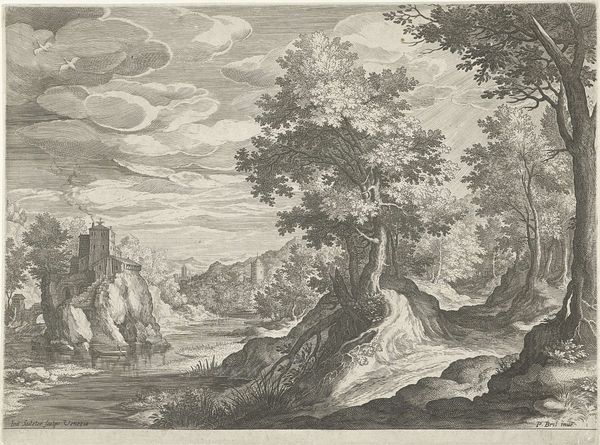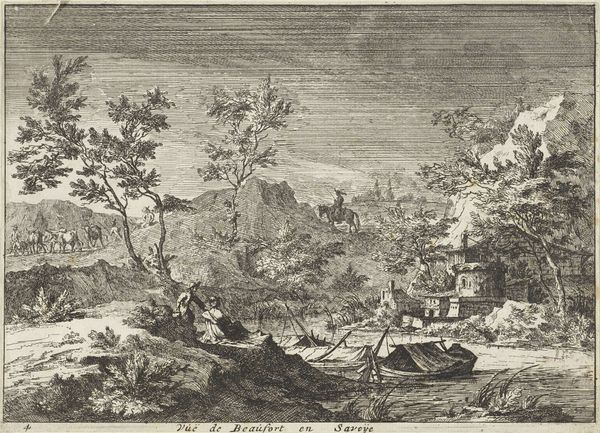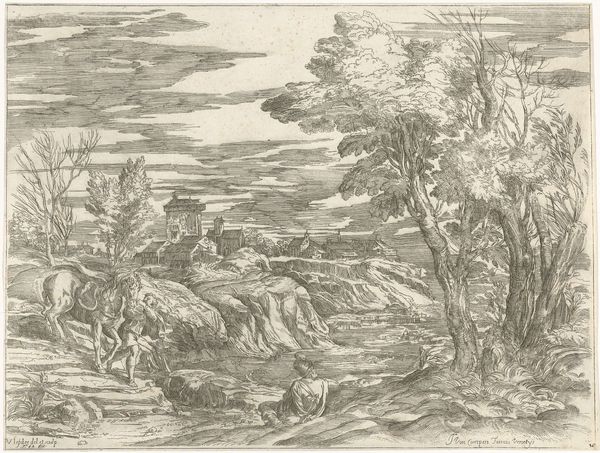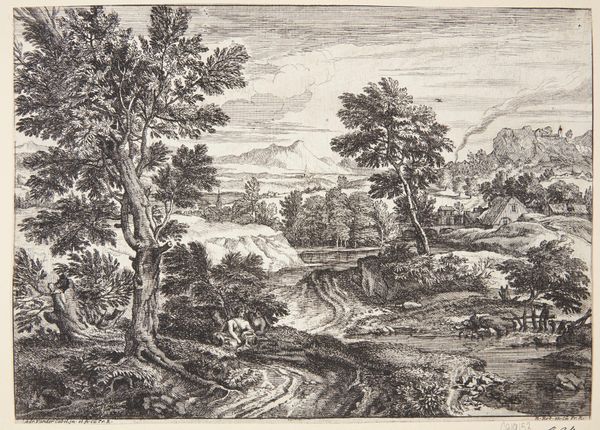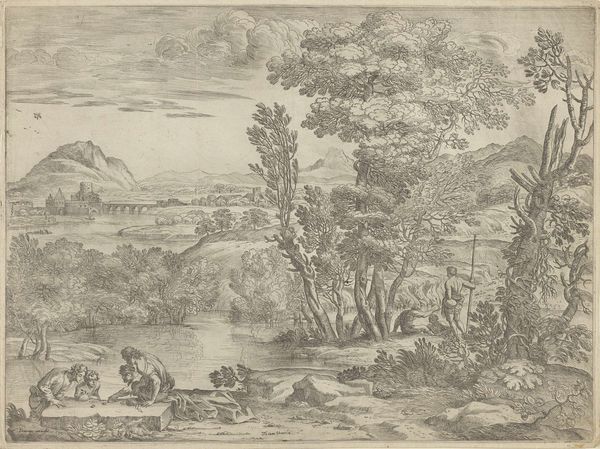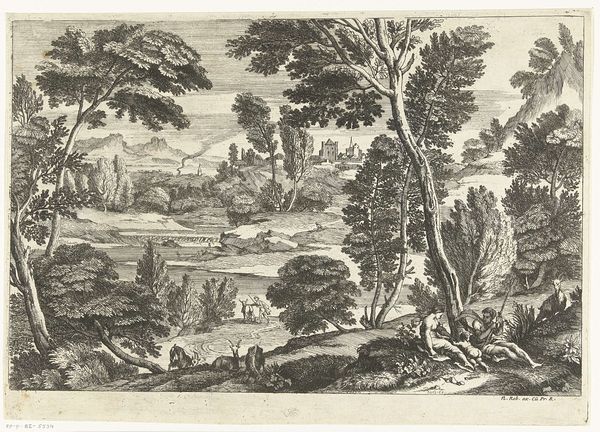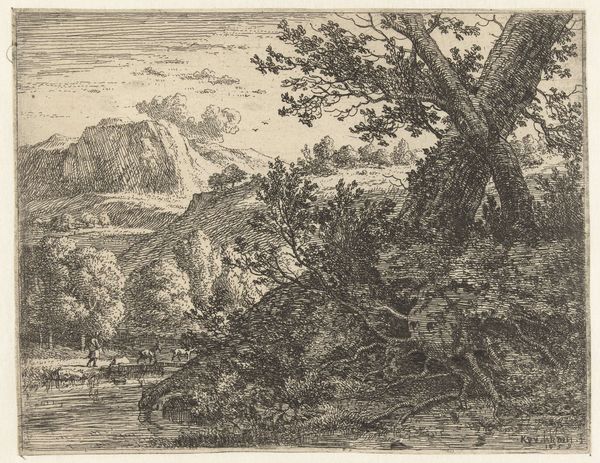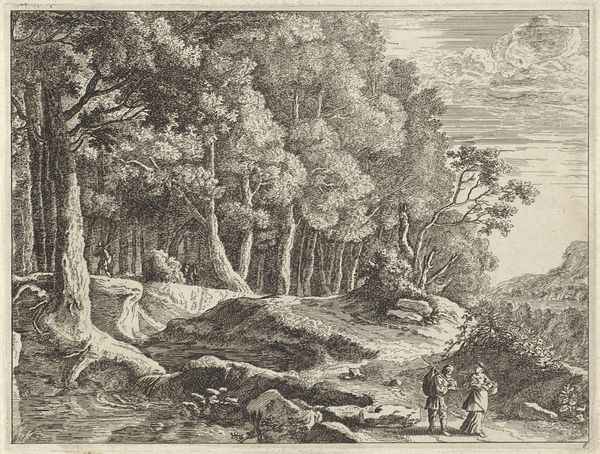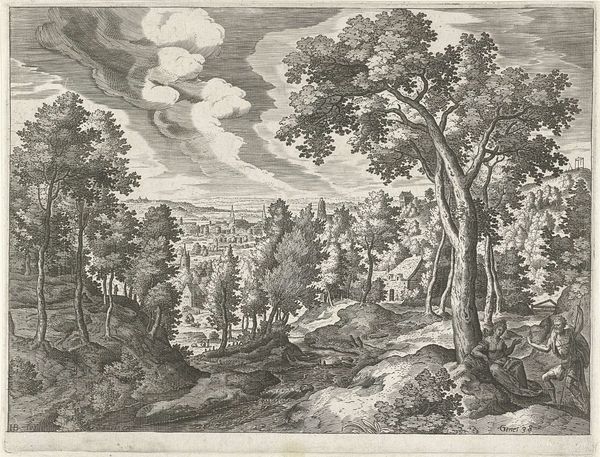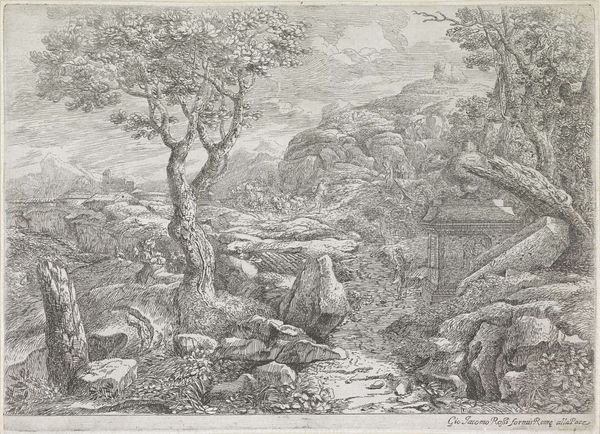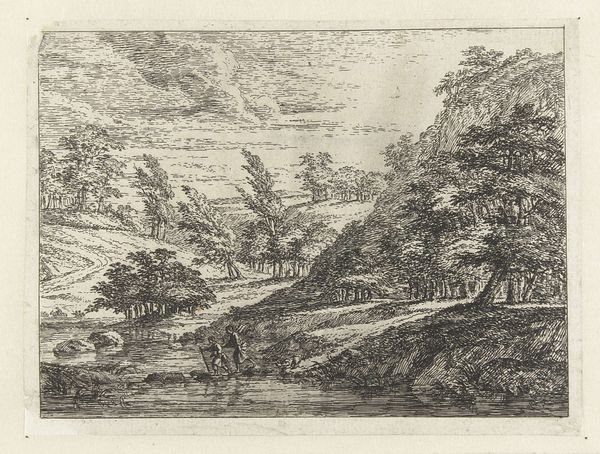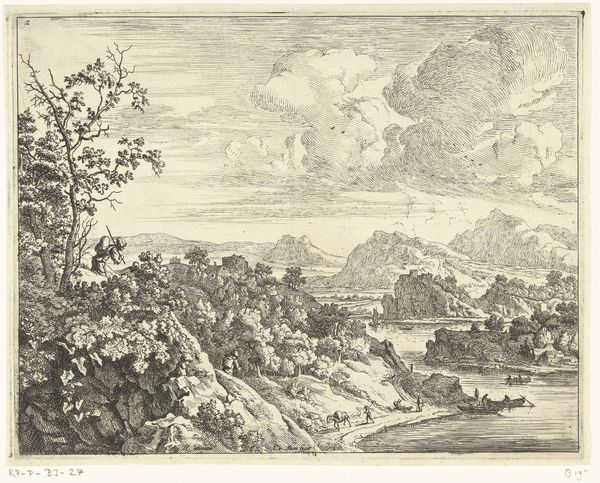
Landschap met de barmhartige Samaritaan met op zijn paard de gewonde reiziger c. 1560 - 1595
0:00
0:00
Dimensions: height 115 mm, width 175 mm
Copyright: Rijks Museum: Open Domain
Curator: Look at this engraving now, “Landscape with the Good Samaritan Tending to the Wounded Traveler,” likely completed between 1560 and 1595 by Julius Goltzius. Editor: It strikes me as visually compelling; the etching technique yields this marvelous textural contrast across the landscape, doesn't it? Curator: Yes, but it is also a depiction of a very specific moral framework from its time! History-painting with deep religious symbolism—derived directly from the Gospel of Luke, showing a display of human kindness within a larger social ecosystem, the town that appears indifferent in the background. Editor: Ah, true. That broader perspective also impacts my view. I can see Goltzius plays with depth using layered detail. The darker foreground directs our gaze towards the finely rendered town and distant hills, creating spatial harmony. Curator: Absolutely. It's the contrast that implicates social forces! We must consider the context in which the story of the Good Samaritan was produced and then consumed. Prints such as this offered a model for proper Christian behavior during a period marked by considerable social upheaval. Editor: Formally speaking, note how the diagonal composition emphasizes a pathway, an unfolding story? Our eyes naturally move along the road from the victim up to the savior. There is a starkness in this presentation. Curator: Correct. We also need to remember that the art market played a massive part here: these engravings disseminated moral narratives widely, they reinforced norms about civic duty through popular consumption. Printmaking served a socio-political role beyond just aesthetics! Editor: It does cause you to wonder: was this crafted simply as a visual experience? I admire the technique of how forms create an interwoven unity. This feels different. It's less about individual elements. Curator: In many ways this etching acts as an important example for understanding how institutions spread the message of specific cultures through material dissemination during a period of major cultural realignment. Editor: Well, I have gained a fresh perspective by discussing both the moral narrative and formal properties interwoven into this work. Curator: And I believe we see once again the complicated role the market had in pushing moral narratives.
Comments
No comments
Be the first to comment and join the conversation on the ultimate creative platform.
